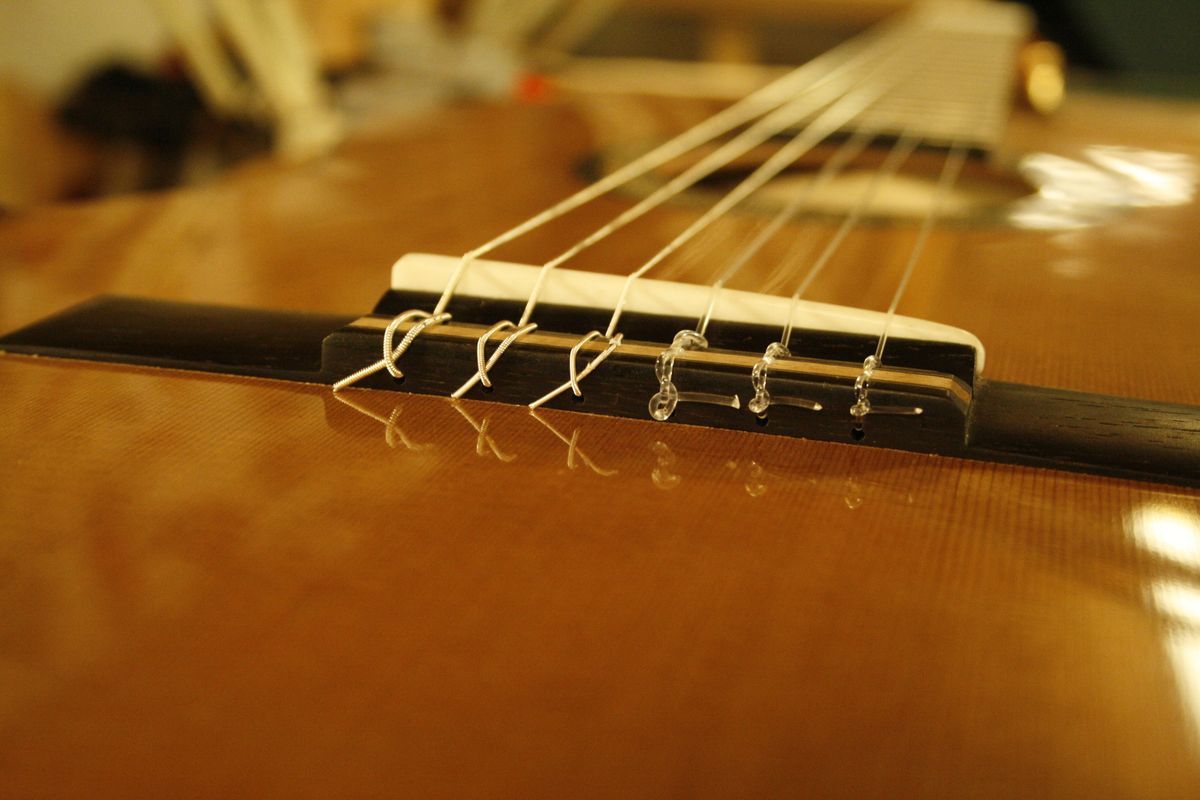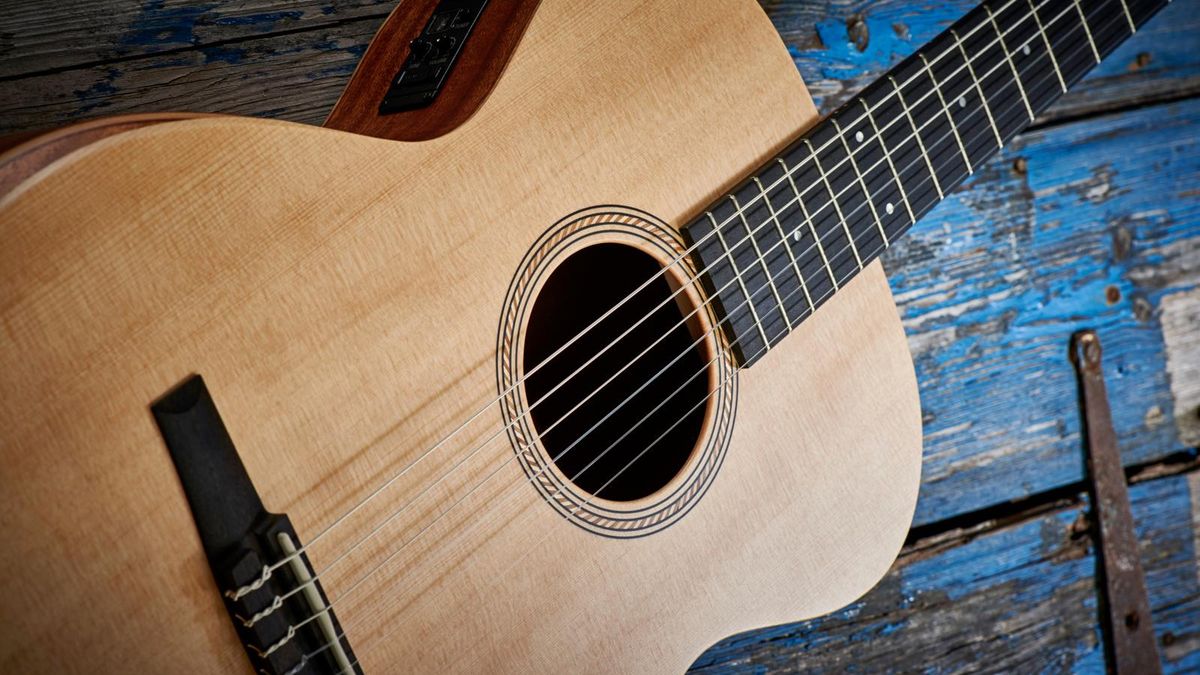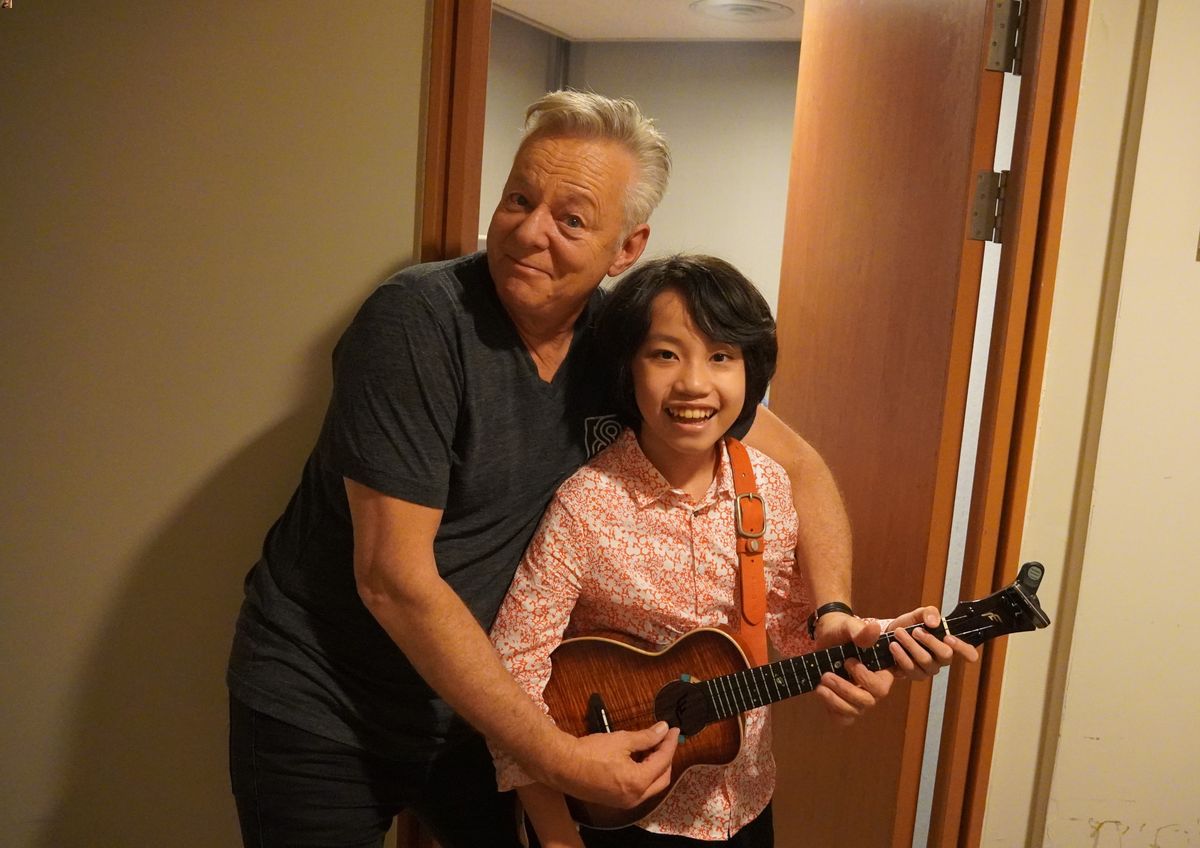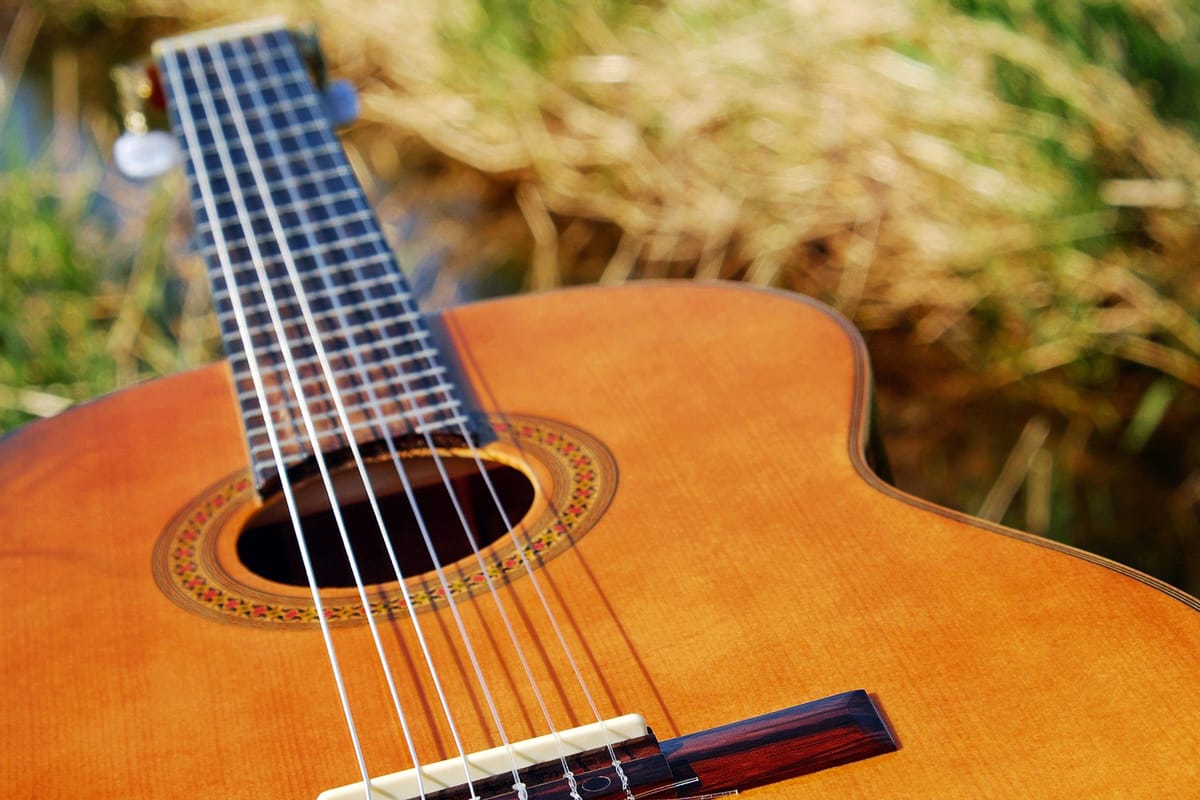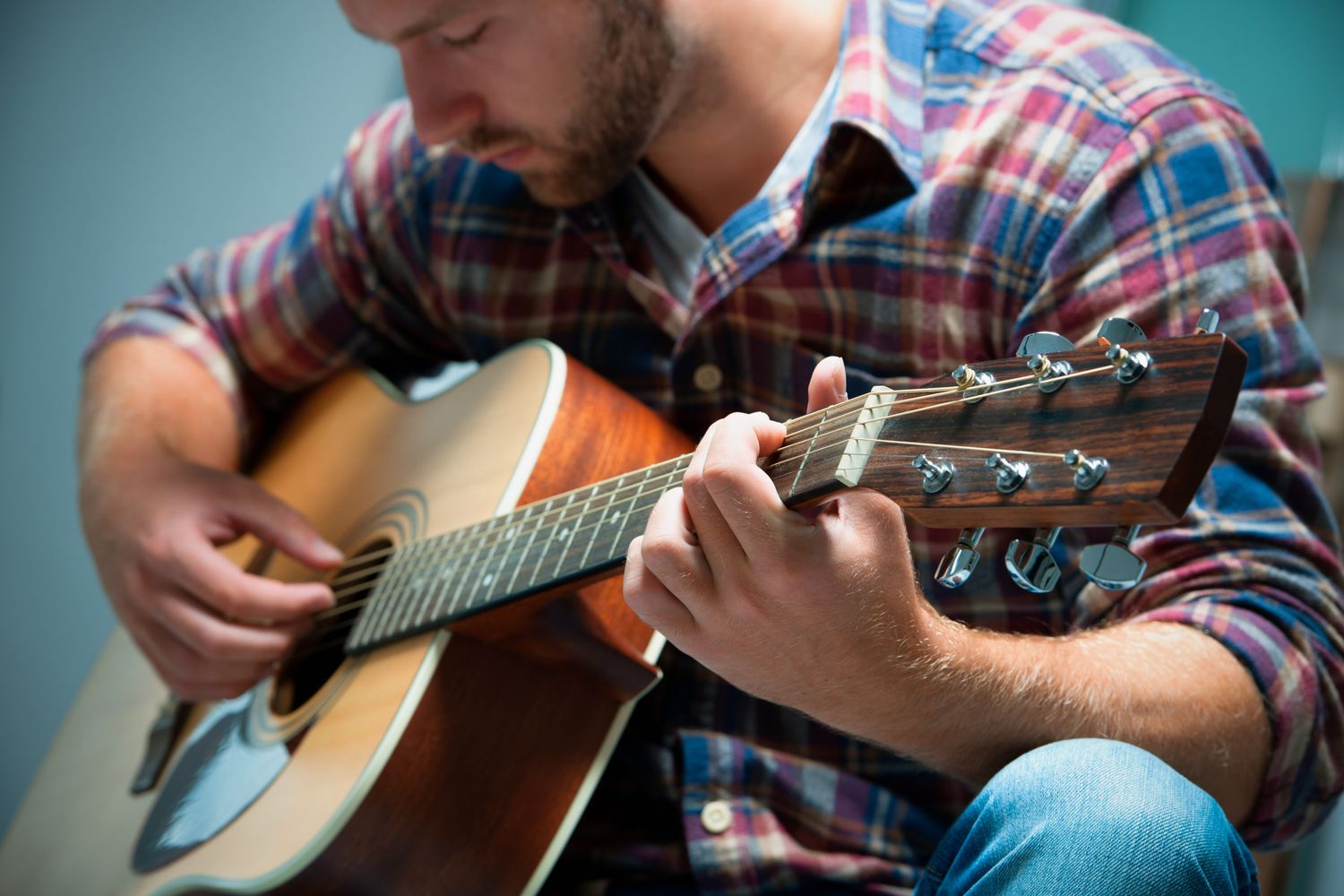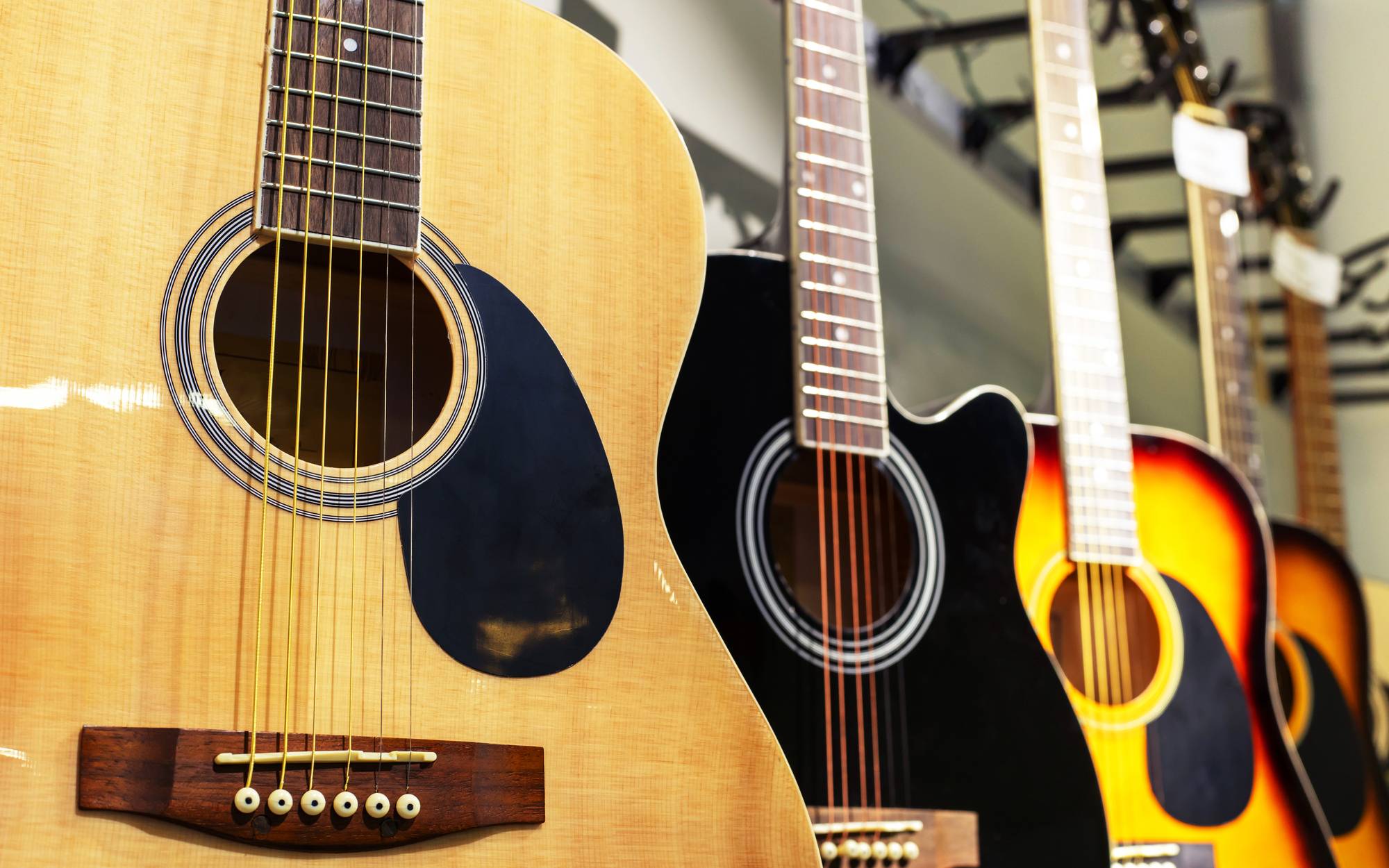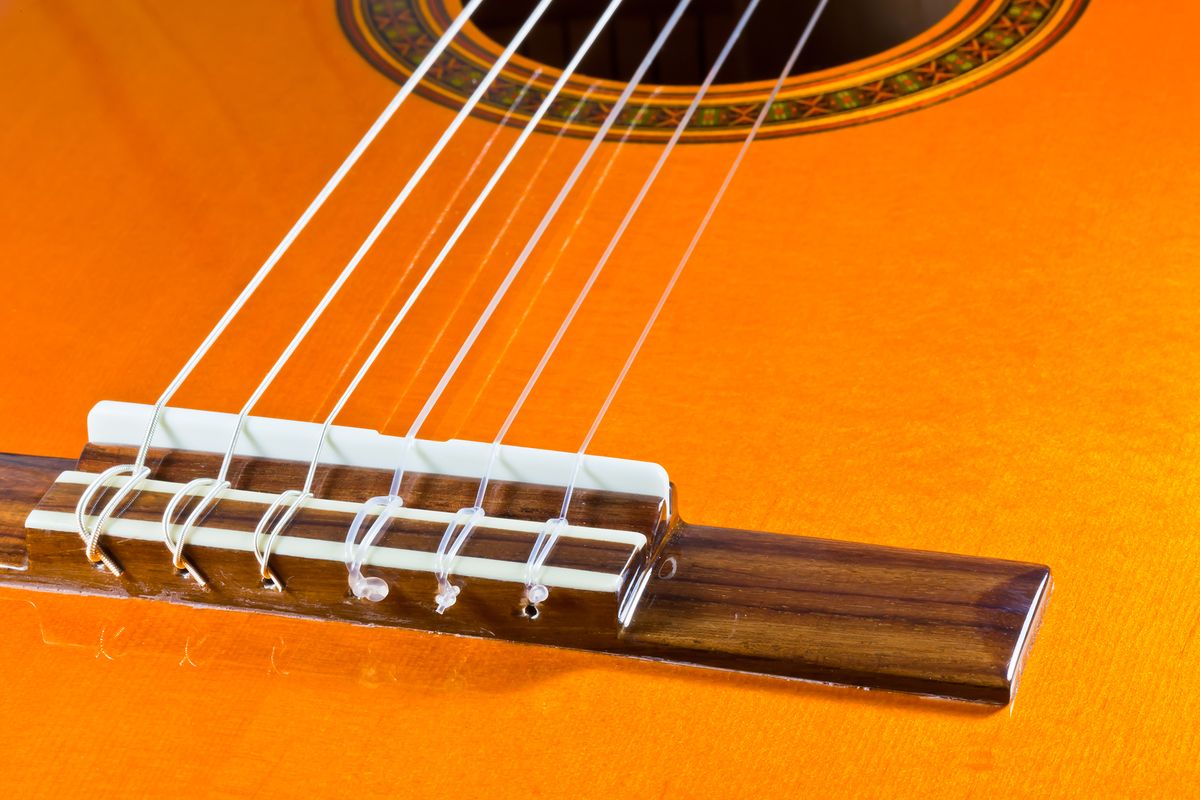Home>Instruments>Guitar>How To Play A Classical Guitar
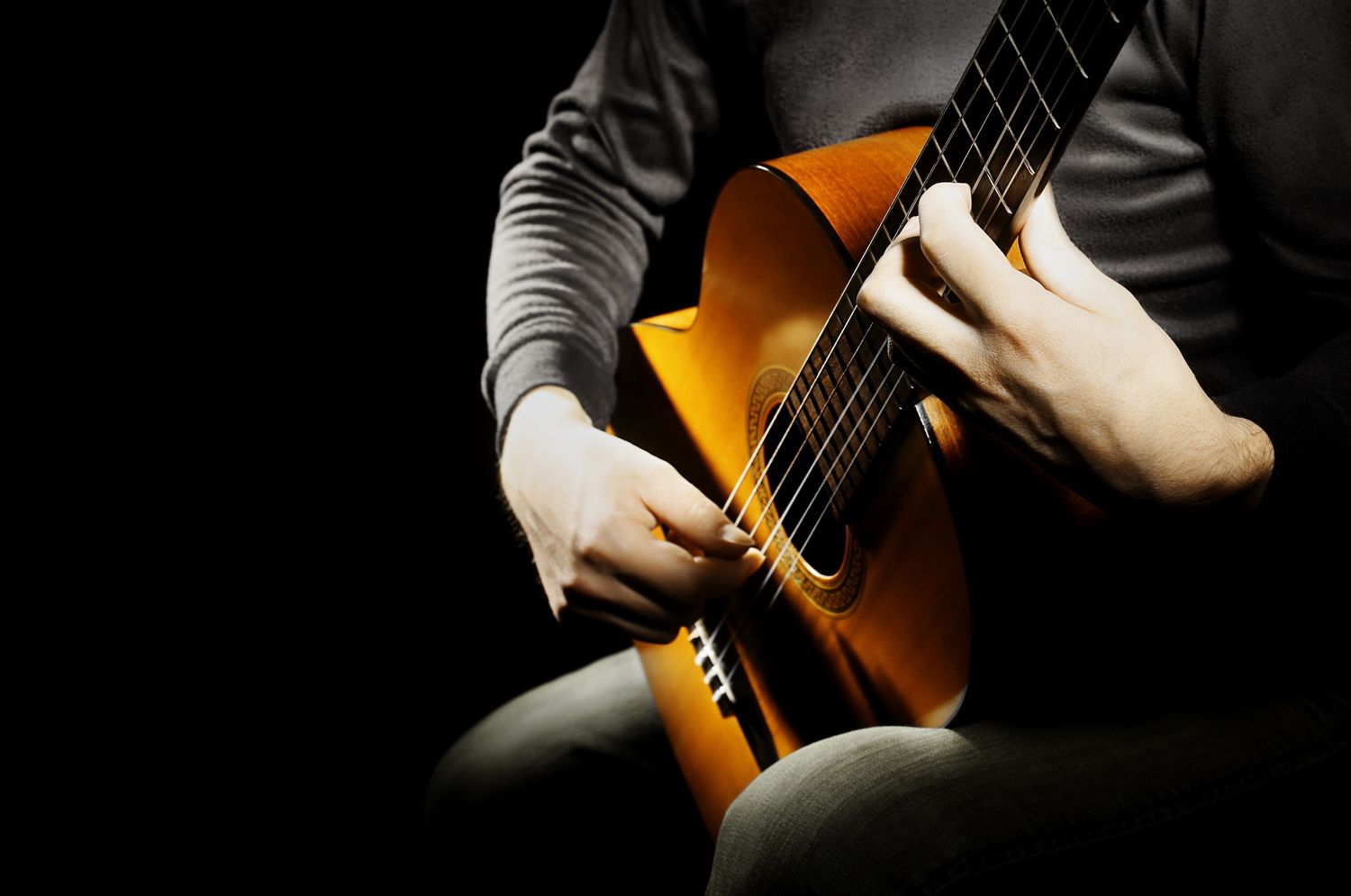

Guitar
How To Play A Classical Guitar
Published: February 13, 2024
Learn how to play a classical guitar with our comprehensive guide. Master the basics and advance your skills to become a proficient guitarist. Discover the joy of playing the guitar today!
(Many of the links in this article redirect to a specific reviewed product. Your purchase of these products through affiliate links helps to generate commission for AudioLover.com, at no extra cost. Learn more)
Table of Contents
Introduction
Playing the classical guitar is a rewarding and enriching experience that allows musicians to explore the rich heritage of classical music while honing their technical skills. Unlike acoustic or electric guitars, classical guitars feature nylon strings and a wider neck, producing a warm and mellow tone that is distinct and captivating. Whether you are a beginner or an experienced guitarist looking to delve into the world of classical music, mastering the art of playing the classical guitar requires dedication, patience, and a deep understanding of the instrument.
In this comprehensive guide, we will explore the fundamental aspects of playing the classical guitar, from selecting the right instrument to mastering basic techniques and learning your first classical piece. By following these steps and practicing consistently, you can embark on a fulfilling musical journey that will not only enhance your guitar skills but also deepen your appreciation for classical music.
Throughout this guide, we will delve into the intricate details of classical guitar playing, including the essential components of the instrument, proper tuning techniques, correct posture, and foundational playing techniques. Additionally, we will provide valuable tips for effective practice sessions and offer guidance on developing your skills to become a proficient classical guitarist.
Whether you aspire to perform classical guitar pieces in front of an audience or simply enjoy the meditative process of playing at home, this guide will equip you with the knowledge and techniques needed to embark on a fulfilling classical guitar journey. Let's begin by exploring the crucial step of choosing the right classical guitar to suit your playing style and preferences.
Choosing the Right Classical Guitar
When embarking on your classical guitar journey, selecting the right instrument is paramount to your success and enjoyment as a musician. Classical guitars come in a variety of sizes, shapes, and tonewoods, each contributing to the instrument’s unique sound and playability. Here are essential factors to consider when choosing the perfect classical guitar:
- Size and Body Shape: Classical guitars are available in various sizes, including full-size, 3/4, and 1/2, catering to players of different ages and physical builds. It’s crucial to select a guitar that feels comfortable and proportionate to your body, allowing for effortless playing and maneuverability.
- Tonewood Selection: The choice of tonewood significantly impacts the guitar’s sound. Common tonewoods for classical guitars include cedar, spruce, and mahogany. Cedar produces a warm, mellow tone, while spruce offers a bright and articulate sound. Mahogany is revered for its balanced tonal characteristics. Understanding the tonal properties of different woods can help you select a guitar that aligns with your sonic preferences.
- Playability and Comfort: Assess the action (string height) of the guitar, as well as the neck width and profile. A guitar with comfortable action and a neck that fits your hand size will facilitate smooth playing and reduce the likelihood of hand fatigue during extended practice sessions.
- Build Quality: Examine the craftsmanship and build quality of the guitar. Look for solid construction, secure bracing, and meticulous attention to detail. A well-constructed instrument will offer better sound projection, resonance, and durability.
- Budget and Value: Set a realistic budget based on your commitment to learning the classical guitar. While high-end guitars may offer superior tonal characteristics and craftsmanship, there are excellent mid-range and entry-level options that provide exceptional value for beginners and intermediate players.
Before making a purchase, it’s advisable to visit a reputable music store and try out different classical guitars to discern their tonal qualities, playability, and overall feel. Additionally, seek guidance from experienced guitar professionals who can offer valuable insights and recommendations based on your skill level and musical aspirations.
By carefully considering these factors and taking the time to explore various options, you can make an informed decision and find a classical guitar that resonates with your musical expression and inspires your artistic journey.
Understanding the Basic Parts of a Classical Guitar
Before diving into the intricacies of playing the classical guitar, it’s essential to familiarize yourself with the instrument’s fundamental components. Understanding the basic parts of a classical guitar not only enhances your technical knowledge but also provides valuable insights into how each element contributes to the instrument’s overall sound and playability.
Here are the essential parts of a classical guitar:
- Headstock: The headstock is located at the top of the guitar’s neck and houses the tuning pegs, which are used to adjust the tension of the strings, thereby affecting their pitch.
- Tuning Pegs: These small, cylindrical mechanisms are located on the headstock and are used to tighten or loosen the strings for precise tuning.
- Neck and Fretboard: The neck is the long, slender portion of the guitar that extends from the body, while the fretboard is a flat surface on the neck where the player presses the strings to produce different pitches.
- Body: The body of the classical guitar is typically made of wood and comprises the soundboard (top), back, and sides. It houses the soundhole, which allows the sound to resonate and project outward.
- Bridge: The bridge is located on the guitar’s soundboard and serves as an anchor point for the strings. It transfers the vibrations of the strings to the soundboard, contributing to the guitar’s acoustic resonance.
- Soundhole: This circular opening on the guitar’s soundboard allows the sound to escape, enhancing the instrument’s acoustic projection and resonance.
- Strings: Classical guitars typically have six nylon strings, which produce a warm and mellow tone. The strings are numbered from the thinnest (1st string) to the thickest (6th string).
By familiarizing yourself with these components and their functions, you gain a deeper appreciation for the classical guitar’s construction and the role each part plays in producing its distinctive sound. As you progress in your musical journey, this knowledge will empower you to maintain and care for your instrument effectively, ensuring that it continues to deliver exceptional tone and playability.
Tuning Your Guitar
Tuning is a critical aspect of playing the classical guitar, as it directly impacts the instrument’s sound and the accuracy of the notes you produce. Unlike steel-string acoustic or electric guitars, classical guitars feature nylon strings, which require specific tuning techniques to achieve the desired pitches. Here’s a step-by-step guide to tuning your classical guitar:
- Understand Standard Tuning: The standard tuning for a classical guitar, from the 6th string to the 1st string, is E-A-D-G-B-E. The 6th string (thickest) is tuned to E, and the 1st string (thinnest) is also tuned to E, but an octave higher.
- Use a Tuner: Utilize a digital tuner or a tuning app to ensure accurate pitch detection. Place the tuner in front of you or attach it to the headstock of the guitar for easy visibility.
- Tune the 6th String (Low E): Begin by tuning the 6th string to E. Pluck the string and adjust the tuning peg until the tuner indicates that the pitch is precisely E.
- Proceed to the Remaining Strings: Tune each subsequent string to the appropriate pitch, following the standard tuning sequence. As you tune each string, listen carefully for the correct pitch and make adjustments as needed.
- Check for Consistency: Once all strings are tuned, play each open string individually and ensure that the pitches are consistent with the standard tuning. Make any final adjustments to achieve accurate pitch across all strings.
It’s essential to develop a keen ear for pitch and train yourself to recognize when a string is in tune. Additionally, regularly tuning your guitar before practice sessions or performances is crucial for maintaining optimal sound quality and ensuring that your playing remains in harmony with other instruments or recorded music.
By mastering the art of tuning your classical guitar, you lay a solid foundation for producing beautiful, resonant tones and executing melodies and chords with precision. Consistent tuning also cultivates your musical ear, honing your ability to discern pitch nuances and enhancing your overall musicianship.
Holding the Guitar Correctly
Proper posture and positioning are integral to playing the classical guitar with ease and precision. By adopting the correct posture and holding the instrument in the optimal manner, you can enhance your playing technique, prevent physical strain, and achieve a resonant, balanced sound. Here’s a guide to holding the classical guitar correctly:
- Sitting Position: Sit on a chair with a straight back, ensuring that both of your feet are flat on the floor. Avoid slouching or leaning back excessively, as this can impede your ability to reach the fretboard comfortably.
- Guitar Placement: Position the lower bout of the guitar on your left thigh (for right-handed players) or right thigh (for left-handed players). The waist of the guitar should rest against your midsection, allowing for stability and support while playing.
- Angle of the Guitar: Tilt the neck of the guitar slightly upward, ensuring that it is at an angle that facilitates easy access to the fretboard. This angle allows your left hand to move along the neck without encountering unnecessary obstacles.
- Arm and Hand Position: Keep your right arm positioned over the guitar’s soundhole, allowing for smooth and controlled movement when plucking the strings. Your left arm should comfortably reach around the upper bout of the guitar, enabling easy finger placement on the fretboard.
- Relaxed Shoulders and Wrists: Maintain a relaxed posture, avoiding tension in your shoulders and wrists. Tension can hinder your playing technique and lead to discomfort or fatigue during extended practice sessions.
By adhering to these guidelines and consistently practicing with proper posture, you develop muscle memory and reinforce a comfortable, sustainable playing position. Over time, holding the classical guitar correctly becomes second nature, allowing you to focus on refining your technique and expressing musical nuances with confidence.
Remember that comfort and ergonomics play a significant role in your playing experience. Experiment with different chair heights and footrest positions to find the most comfortable and supportive setup for your body. Additionally, maintaining a relaxed yet attentive posture while playing fosters a deep connection with the instrument, enabling you to channel your musical expression with fluidity and grace.
Basic Techniques for Playing Classical Guitar
Mastering fundamental playing techniques is essential for developing a strong foundation in classical guitar performance. These techniques not only facilitate the execution of melodies, chords, and arpeggios but also contribute to the cultivation of a nuanced and expressive playing style. Here are key techniques to focus on as you embark on your classical guitar journey:
- Proper Right Hand Position: Position your right hand over the soundhole, allowing your thumb to rest on the 6th (low E) string and your fingers to hover over the remaining strings. Maintain a relaxed yet poised hand posture to facilitate controlled plucking and strumming.
- Rest Stroke (Tirando) and Free Stroke (Apoyando): These are primary right-hand techniques used for plucking the strings. In rest stroke, the finger plucks the string and comes to rest on the adjacent string, while in free stroke, the finger plucks the string and does not make contact with the adjacent string. Practice both techniques to develop agility and precision in your plucking motion.
- Left Hand Finger Placement: Use the tips of your fingers to press the strings against the frets, producing clear and resonant notes. Position your fingers close to the frets to minimize string buzzing and ensure optimal intonation.
- Basic Chords and Chord Transitions: Familiarize yourself with foundational chords such as E minor, A minor, and C major. Practice transitioning between these chords smoothly, ensuring that each note rings out clearly without unintended muting or buzzing.
- Arpeggios: Explore arpeggio patterns, which involve playing the individual notes of a chord in a sequential, flowing manner. Develop dexterity in your right-hand fingers to execute arpeggios with fluidity and evenness.
Consistent practice and focused attention on these techniques will refine your playing abilities and instill confidence in your musical expression. It’s important to start slowly and gradually increase your speed and accuracy as you become more comfortable with each technique. Additionally, pay close attention to your hand and finger positioning, ensuring that you maintain a relaxed and natural posture to minimize tension and facilitate fluid movement.
As you progress, these foundational techniques will serve as the building blocks for more advanced playing styles and repertoire. Embrace each practice session as an opportunity to refine your technique, cultivate a discerning ear for tone and dynamics, and imbue your playing with artistry and emotion.
Learning Your First Classical Guitar Piece
Embarking on the journey of learning your first classical guitar piece is an exciting and formative experience. It marks the beginning of your exploration into the rich tapestry of classical music and offers a tangible milestone in your musical development. When selecting your inaugural piece, consider the following steps to set yourself up for a rewarding and fulfilling learning process:
- Choose a Beginner-Friendly Piece: Opt for a piece that is specifically composed for beginners, featuring manageable note sequences, chord progressions, and minimal technical complexities. Pieces such as simple études, folk songs, or classical compositions arranged for novice players are excellent choices.
- Focus on Melody and Phrasing: Select a piece with a captivating melody and expressive phrasing, as this will engage your musical sensibilities and provide a platform for developing nuanced interpretation and dynamics.
- Break Down the Piece: Divide the piece into smaller sections or musical phrases, and approach each segment systematically. Focus on mastering one section at a time before progressing to the next, ensuring that you achieve proficiency and fluency in each passage.
- Practice Scales and Technical Exercises: Complement your piece learning with scale exercises and technical drills that target specific challenges presented in the music. This holistic approach enhances your overall dexterity, finger independence, and fretboard familiarity.
- Seek Guidance and Resources: Leverage instructional materials, tutorial videos, and sheet music with annotations to aid in your learning process. Additionally, consider seeking guidance from a qualified guitar instructor who can provide personalized feedback and guidance tailored to your learning pace and goals.
Approach your first classical guitar piece with patience, diligence, and a spirit of curiosity. Embrace the learning journey as an opportunity to refine your technique, cultivate musical expression, and deepen your understanding of classical guitar repertoire. Celebrate incremental progress and take pride in each milestone achieved, whether it’s mastering a challenging passage, achieving seamless chord transitions, or infusing the piece with your unique musical interpretation.
Remember that the essence of learning your first classical guitar piece extends beyond technical proficiency; it encompasses the joy of musical discovery, the cultivation of discipline and perseverance, and the unfolding of your artistic voice. Embrace the process with enthusiasm and dedication, and let the music inspire and enrich your journey as a classical guitarist.
Developing Your Skills
As you progress in your classical guitar journey, honing your skills is essential for mastering the instrument and broadening your musical horizons. Cultivating a multifaceted approach to skill development encompasses technical proficiency, musical interpretation, and a deep understanding of music theory. Here are key strategies for advancing and refining your skills as a classical guitarist:
- Technical Exercises: Dedicate time to practicing scales, arpeggios, and finger exercises to enhance your finger dexterity, coordination, and fretboard familiarity. These exercises lay the groundwork for executing complex passages and challenging repertoire with precision.
- Repertoire Expansion: Explore a diverse range of classical guitar repertoire, encompassing different musical periods, styles, and composers. Engaging with varied repertoire exposes you to unique musical phrasing, tonal palettes, and interpretive nuances, broadening your musical vocabulary and artistic sensibilities.
- Ear Training: Develop your ear through focused listening, transcription exercises, and sight-reading. Training your ear enhances your ability to recognize intervals, chord progressions, and musical motifs, empowering you to interpret and perform music with heightened sensitivity and accuracy.
- Music Theory Study: Delve into music theory concepts such as harmony, counterpoint, and form, as they relate to classical guitar repertoire. Understanding music theory enriches your interpretive insights, fosters informed musical decisions, and deepens your appreciation for the structural elements of compositions.
- Performance Opportunities: Seek opportunities to perform for an audience, whether in informal settings, open mic events, or recitals. Performing cultivates confidence, stage presence, and the ability to communicate musical narratives effectively, complementing your technical prowess with expressive communication.
Consistent and deliberate practice, coupled with a spirit of curiosity and exploration, forms the bedrock of skill development. Embrace challenges as opportunities for growth, and maintain a balance between technical discipline and expressive artistry. Additionally, seek inspiration from accomplished classical guitarists and attend live performances to glean insights into interpretive nuances and performance techniques.
Remember that skill development is a continuous, enriching journey that unfolds over time. Embrace the process with patience and perseverance, and celebrate the incremental advancements that contribute to your evolution as a versatile and expressive classical guitarist.
Tips for Practicing Effectively
Effective practice is the cornerstone of progress and proficiency in mastering the classical guitar. By implementing strategic approaches and mindful techniques, you can optimize your practice sessions to maximize skill development and musical growth. Here are invaluable tips for practicing effectively and purposefully:
- Establish a Consistent Practice Routine: Dedicate regular, structured practice sessions to cultivate discipline and continuity in your musical development. Consistency fosters steady progress and reinforces muscle memory.
- Set Clear Goals and Objectives: Define specific, achievable goals for each practice session, whether it’s mastering a challenging passage, refining technical skills, or memorizing a new piece. Clear objectives provide direction and motivation.
- Focus on Quality Over Quantity: Prioritize focused, attentive practice over extended hours. Concentrated, mindful practice yields greater results than unfocused, prolonged sessions.
- Break Down Complex Passages: Deconstruct intricate passages into smaller segments, and practice each segment methodically. Gradually integrate these segments to master the passage as a whole, ensuring precision and fluency.
- Utilize Metronome and Recording Tools: Incorporate a metronome to develop rhythmic accuracy and steady tempo. Additionally, record your practice sessions to review your progress, identify areas for improvement, and track your musical development over time.
- Embrace Slow, Deliberate Practice: Start at a comfortable pace and gradually increase speed as proficiency improves. Slow, deliberate practice hones precision, finger coordination, and musical expression.
- Maintain a Positive Mindset: Approach practice with a growth-oriented mindset, embracing challenges as opportunities for improvement. Cultivate patience, resilience, and a passion for continual learning.
- Take Breaks and Rest Periods: Incorporate short breaks during practice sessions to prevent mental and physical fatigue. Rest periods rejuvenate focus and prevent overexertion.
- Seek Feedback and Self-Assessment: Solicit constructive feedback from mentors, instructors, or fellow musicians. Engage in self-assessment to identify areas for improvement and celebrate milestones achieved.
By integrating these tips into your practice regimen, you can elevate the effectiveness and productivity of your practice sessions, nurturing a dynamic and rewarding musical journey. Remember that effective practice is not solely about technical mastery; it encompasses the cultivation of musical expression, interpretive depth, and a profound connection with the music you perform.
Approach each practice session with intention, curiosity, and a commitment to continuous growth, and let the music guide and inspire your artistic evolution as a classical guitarist.
Conclusion
As you conclude this comprehensive guide to playing the classical guitar, you have embarked on a transformative journey into the captivating realm of classical music. From selecting the perfect instrument to mastering foundational techniques and delving into your first classical piece, you have laid a solid groundwork for a fulfilling and enriching musical pursuit.
Embracing the art of playing the classical guitar encompasses not only technical proficiency but also a deep connection with the instrument, a keen musical sensibility, and a spirit of continual curiosity and growth. Each practice session, each new piece learned, and each skill refined contributes to your evolution as a versatile and expressive classical guitarist.
As you navigate the intricacies of posture, technique, and musical interpretation, remember that the essence of classical guitar playing lies in the joy of musical discovery, the cultivation of discipline and perseverance, and the unfolding of your unique artistic voice. Whether you aspire to perform on grand stages or find solace in the meditative process of playing at home, the classical guitar offers a rich tapestry of musical expression and creative fulfillment.
As you continue your musical odyssey, embrace each practice session as an opportunity for growth, each new piece as a canvas for artistic expression, and each skill honed as a testament to your dedication and passion for the classical guitar. Let the music inspire, uplift, and guide you as you carve your path as a devoted and expressive classical guitarist.
May your journey be adorned with musical discoveries, artistic triumphs, and the enduring joy of creating soul-stirring melodies through the timeless resonance of the classical guitar.

